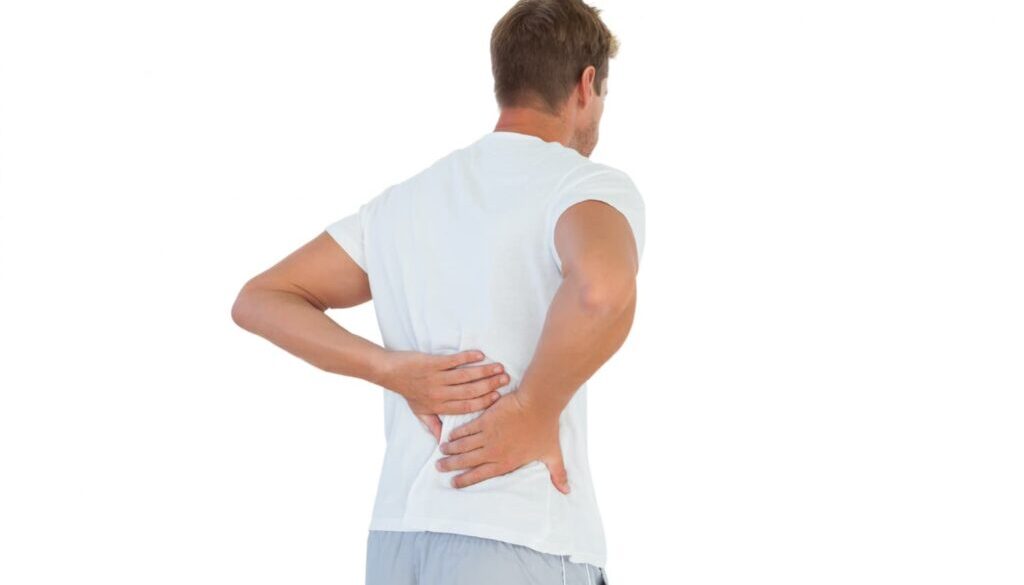Lower Back Pain In Dubai
Say Goodbye to Lower Back Pain: Your Comprehensive Guide to Relief and Recovery
Lower back pain is a widespread issue impacting millions of people worldwide. Its severity varies from slight discomfort to severe agony, significantly affecting daily activities and overall productivity. Dr. Hari Prasath T, Specialist Orthopaedic Surgeon at our Lifeline Clinic, is renowned as the best orthopaedic surgeon in Dubai for back pain treatment. This blog equips you with knowledge to understand back pain treatment, causes, diagnose, manage, and potentially prevent lower back pain.
What is Lower Back Pain?
The lower part of your back, called the lumbar spine, comprises a complex arrangement of vertebrae, discs, muscles, ligaments, and nerves. Hence it provides support and flexibility for your upper body, allowing you to move and bend. Lower back pain simply refers to discomfort or pain in this region by several causes.
Symptoms
Lower back pain manifests differently for individuals but commonly includes:
- Dull Aching: Persistent or intermittent pain in the lower back region.
- Stiffness: Difficulty in bending, standing up straight, or performing daily activities.
- Radiating Pain: Pain may radiate down to the buttocks, thighs, or legs, often indicating nerve involvement.
- Muscle Spasms: Unintentional muscle contractions occurring in the lower back.
- Limited Mobility: Difficulty in moving or performing certain movements due to pain.
- Pain Intensity: Varies from slight discomfort to intense, stabbing pain, affecting daily tasks and overall well-being.
If you experience any of these symptoms of lower back pain, it’s essential to visit an orthopedic doctor near you in Dubai for proper evaluation of causes and treatment.
Diagnosis
Diagnosing lower back pain often involves a physical examination by our doctor in Dubai. Also they may inquire about your pain history, activities, and any recent injuries. Depending on the complexity, further evaluation might include:
- X-rays: To visualize bones and any fractures or misalignments.
- MRI scans: To assess soft tissues like discs, ligaments, and nerves.
- CT scans: To provide detailed 3D images of the spine.
- Nerve conduction studies: To evaluate nerve function.
Causes
Lower back pain can arise from various causes, some more serious than others:
- Muscle strain or ligament sprain: Lifting heavy objects or improper posture can strain muscles or ligaments.
- Disc herniation: The soft cushion between vertebrae can bulge or rupture, causing pain and nerve compression.
- Degenerative disc disease: Discs naturally wear and tear with age, leading to pain and stiffness.
- Arthritis: Swelling in the facet joints of the spine can cause discomfort and stiffness.
- Sciatica: When a bulging disc or bony growth presses on the sciatic nerve, it sends pain down the leg.
- Osteoporosis: Weakened bones in the spine can lead to fractures.
- Poor posture: Slouching puts excessive strain on back muscles and ligaments.
- Obesity: Excess weight increases stress on the spine.
Treatment
Many times, lower back pain gets better on its own within a few weeks with self-care actions like:
- Rest: Avoid tough tasks for a couple of days.
- Ice and heat therapy: Apply ice packs for the first few days to reduce inflammation, followed by heat therapy to promote healing.
- Pain relievers: Medicines like ibuprofen or acetaminophen can help ease pain.
- Gentle stretching and exercises: Specific exercises can strengthen core and back muscles, improving flexibility and pain tolerance.
For persistent or severe back pain, consult our doctor in dubai and they might recommend the right treatment such as:
- Physiotherapy: A tailored exercise program to strengthen muscles and improve flexibility.
- Medication: Muscle relaxants, prescription pain medication, or anti-inflammatory drugs.
- Injections: Steroid injections can offer temporary pain relief.
- Surgery: In rare cases, surgery might be necessary to remove a herniated disc or repair a fracture.
Prevention
Here are some suggestions by our orthopedic doctor to avoid lower back pain:
- Maintain good posture: Stand upright with your shoulders pulled back and your core muscles engaged.
- Exercise regularly: Low-impact exercises like swimming, walking, and yoga can strengthen your core and improve flexibility.
- Maintain a healthy weight: Excess weight puts stress on your lower back.
- Lift with proper technique: Bend your knees and keep your back straight when lifting objects.
- Take breaks from sitting: Get up and move around every 20-30 minutes.
- Use ergonomic furniture: Invest in a chair with good back support and adjust your workstation for proper posture.
- Practice stress management: Stress can exacerbate pain. Also practices such as yoga or meditation can help in stress management.
FAQs
My work involves standing for hours. How can I avoid lower back pain?
- Take frequent breaks (every 20-30 minutes) to move around and stretch.
- Invest in anti-fatigue mats for standing areas to improve comfort.
- Wear supportive shoes with good arch support.
- Practice good posture while standing, with shoulders back and core engaged.
Is there a difference between acute and chronic back pain?
- Acute pain is sudden and usually resolves within a few weeks. Chronic pain lasts longer than 3 months.
Can yoga help with lower back pain?
- Certain yoga poses can strengthen core and back muscles, improve flexibility, and promote relaxation, all beneficial for back pain management.
Is it advisable to use back braces or supports for lower back pain relief?
- Back braces or supports may provide temporary relief by stabilizing the spine, but they should be used under the guidance of a healthcare professional.
Is it safe to lift weights with lower back pain?
- Consult a healthcare professional before lifting weights. They can advise on safe weightlifting techniques to strengthen muscles without aggravating pain.




